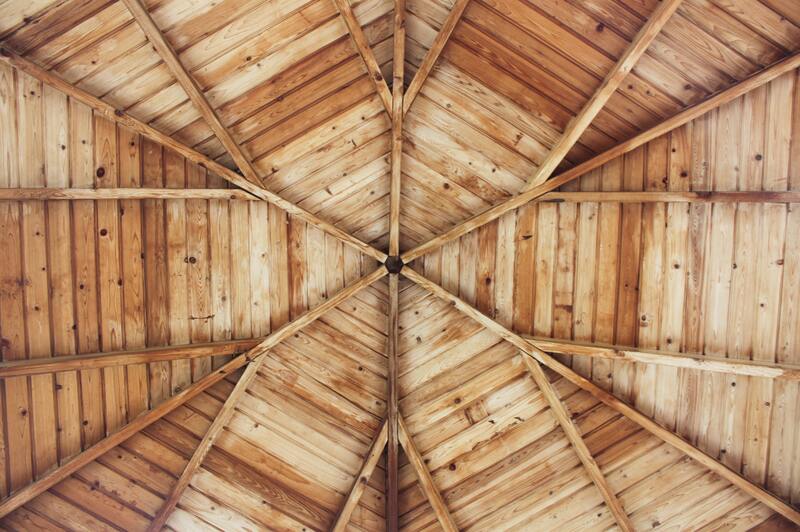Do you want to know how to replace a water damaged wood ceiling? Then this is the right place where you can find answers.
Water damage is a concern for many homes. Wooden parts of the house are the most affected and can easily be damaged by water.

Regularly check the wooden parts in your home, especially if it is the floor, walls, and ceiling. This article would be more about wood ceiling water damages; continue reading to learn more and
Identifying Signs Of Water Damaged Wood Ceiling
In many cases, the cause of water damage on the wood ceiling is leaking roofs or broken water pipes. If you did not immediately identify these damages, it might lead to the wood rotting or growing mold and mildew.
If you are interested to learn more, you can visit this article concerning why does wood get damaged by water. There you would understand the effects of water on wood and what things you’ll need to remember.
To prevent further damage, here are signs that you may want to take note of, so you can identify the water damage in your ceiling:
- Discolorations – Long exposure to water might cause visible discoloration spots. If you found odd faded spots on your ceiling, that might be from water exposure.
- Drips – Fluid dripping from the ceiling to the wall might be the earliest signs of water leaks. Immediately assess the situation when you spot an abnormal pooling on your floor coming from above.
- Paint bubbling – Moisture might be present, causing the paint to expand and collect liquid. For more information, you can visit this article about how to fix bubbled water damaged ceiling paint.
- Peeling paint – Water can cause the coat to peel or flake and expose the damp wood behind it.
- Mold – The growth of colored fuzzy or slimy things is another sign of excessive moisture on your ceiling, which is the perfect dwelling for mold and mildew to grow. Other than the visible signs, musty smells might indicate mold growth.
You may visit this content regarding the signs your ceiling needs water damage restoration for a piece of more detailed information.
When to replace or repair a water damaged ceiling?
To know what next course of action, you can refer to the following questions:
- Did you immediately spot the problem, or was it present for an extended period?
- What level is the damage; is it minor or severe?
- Do you have the proper equipment to repair the damage by yourself?
- Do you know how you can fix it?
- Do you have the time to resolve the problem?
- Which would cost you more, repairing or replacing?
That is just a few of the many queries you should consider before proceeding with anything. You might have other things to consider than what is stated above; if so, you’ll have to ponder it more and ensure that you choose the most suitable decision.
Whether it is repairing or replacing, both would have pros and cons; it is a matter of knowing which suits your situation best. Often, what works for other cases won’t work for you, and if you are unsure of what to do, you can approach a professional for an assessment.
Fixing Water Damaged Wood Ceiling
Depending on the extent of the damage, repairing a water damaged wood ceiling might come off as a difficult task. More so, if you don’t know how to fix it, here is a step-by-step instruction that you can follow:
Step #1. The first thing to do is move your furniture and equipment away from the room where the ceiling is affected. Covering up the heavier stuff with plastic is doable too.
Step #2. Assess the damage. Know if the liquid is still dripping; if it is, you’ll have to solve the root of the problem first, like fixing a broken pipe or leaking roof.
Step #3. After ensuring that the source of water damage is solved, you can dry out the existing moisture from the wood by using a dehumidifier and leaving it for at least 24 hours. If you don’t have a dehumidifier, you can use a fan and open the windows for a better airflow inside.
Step #4. If the damage is minor and the wood is still intact, you can proceed to patch up the holes and cracks. Using joint compounds to fill the gaps might help.
If the damage is extensive, you can opt for replacement. Start by cutting off the damaged ones and then replacing them with a new piece.
For more detailed instructions on replacing wood, see this article about how to fix a rotting ceiling.
Step #5. Finally, you can prime and paint the area; be sure to let the products dry after each application. Be sure that the plank is seamless so it wouldn’t appear like a mess.
Conclusion
In conclusion, there are things that you have to consider before proceeding on knowing how to replace a water damaged wood ceiling. Sometimes, the damages might be a minority, so a replacement is not a requirement; it is best to assess the situation before concluding what you’ll do.
If you still want to know more, continue to explore this website for more knowledgeable content.
